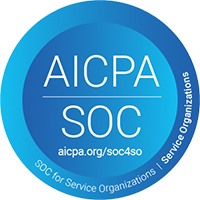What is Demand Planning?

Accurately predicting what your customers need is one of the most significant challenges businesses face in supply chain management. It’s a delicate balancing act—order too little, and you’ll face stockouts and frustrated customers. Order too much, and you tie up valuable cash in excess inventory, weighing down your operations with burdensome carrying costs.
This is where demand planning becomes not just a helpful tool but an essential strategy for success. Demand planning bridges the gap between intuition and data, turning insights from historical trends, customer behavior, and market conditions into actionable decisions. It’s the difference between businesses with a reactionary approach to inherently unpredictable demand and those that confidently address customers’ needs while staying ahead of the competition.
In the world’s undeniably consumer-driven marketplace, mastering demand planning isn’t just about efficiency—it’s about survival and growth. Let’s dive into demand planning and how you can get better at it.
What is demand planning?
Demand planning is the process of closely monitoring internal and external factors that affect customer demand and product availability. Demand planning is a critical part of supply chain management.
For example, customer demand might slow in the face of natural disasters, and labor force issues may affect customer spending. The recent coronavirus epidemic drove demand for masks to stock-out levels. On a smaller, more predictable scale, seasonal shifts affect customer demand; demand for snow shovels will spike in the winter and dissipate in the summer.
Demand planning in 2023 and beyond requires not only conscious observation of the market, the supply chain and customer behavior, but intelligent use of apps that can incorporate data on usage into decision-making. Modern demand planners must take a proactive look at real-time data and actual usage rather than relying on historical sales numbers.
This involves a renewed emphasis on the customer’s needs and usage, rather than the drive to simply stock products on shelves, just in case they need them. It’s about anticipating true demand instead of blindly fulfilling inventory.
Why is demand planning important?
Demand planning helps you better manage your business and improve the way you serve your customers, while conserving cash. A strategic approach to demand planning fuels decision-making with actual data. Demand planning helps you as a distributor:
-
Get more in-sync with your customers. Effective demand planning means your inventory aligns more closely with customer usage, and therefore reflects customer needs. Demand planning may identify areas where your customers may be able to save cash or may be experiencing challenges, giving distributors an opportunity to help.
-
Produce more accurate business metrics. Over time, an effective demand planning process helps businesses better understand what affects customer needs.
-
Improve inventory management. With the right data, you can fine-tune minimum and maximum (min/max) inventory levels to optimize service levels for your customers, saving both you and your customers money.
What’s the difference between demand planning and sales forecasting?
While they sound similar, demand planning and sales forecasting are two distinct processes that play critical roles in a company’s inventory and supply chain management. These two functions normally work in tandem, but each focuses on different aspects of operational success. Understanding the key differences is essential for optimizing both your short-term and long-term business strategies.
What Is Sales Forecasting?
Sales forecasting is a predictive process that estimates future sales revenue over a specific time frame, such as a month, quarter, or year. It typically focuses on historical sales data, market trends, and sales team performance to project what volume of products or services a company is likely to sell.
4 features of sales forecasting:
-
Focus: Primarily on revenue generation and sales volume projections.
-
Time Frame: Usually short to medium term (e.g., 30 days, a quarter, or a fiscal year).
-
Key Drivers: Includes historical sales data, marketing campaigns, customer demand patterns, and sales team quotas.
-
Output: Sales forecasts often guide revenue expectations, budget planning, and resource allocation.
For example, if a retail chain sold an average of 500 units of a specific product every December for the past five years, a sales forecast might predict a similar sales volume for the upcoming holiday season, assuming no major market disruptions.
What Is Demand Planning?
Demand planning takes a broader and more strategic view, focusing on ensuring that the right amount of inventory is available to meet customer demand. This process involves a combination of sales forecasting, inventory optimization, and supply chain coordination. It requires collaboration across multiple departments, including sales, marketing, finance, and procurement, to create a holistic approach to managing customer demand.
4 main features of demand planning:
-
Focus: Balances inventory levels, supply chain efficiency, and customer satisfaction.
-
Time Frame: Often spans both the short term and long term, depending on operational needs.
-
Key Drivers: Includes sales forecasts, historical demand trends, seasonality, production capabilities, lead times, and external factors like market changes or economic conditions.
-
Output: Guides purchasing, manufacturing, and distribution decisions to ensure adequate stock levels while minimizing overstock or stockouts.
For example, a distributor might use demand planning to account for seasonal surges in product demand, ensuring they have enough stock to fulfill orders without overloading their warehouses or incurring excessive carrying costs.
Key Differences Between Demand Planning and Sales Forecasting
-
Scope and Purpose: Sales forecasting focuses solely on predicting future sales volumes, while demand planning takes a broader approach to align inventory, production, and supply chain strategies with anticipated customer demand.
-
Data Inputs: Sales forecasting relies heavily on historical sales data and sales team performance, whereas demand planning incorporates additional factors like supplier lead times, inventory levels, and external market conditions.
-
Output: Sales forecasting informs revenue and budget expectations, while demand planning ensures that operational resources—inventory, production capacity, and distribution networks—are optimized to meet customer needs.
-
Time Frame: Sales forecasting is often short-term and revenue-focused, while demand planning can extend into longer time horizons, balancing both immediate and future supply chain needs.
How Sales Forecasting and Demand Planning Work Together
Although they serve different purposes, sales forecasting and demand planning complement each other. A strong sales forecast provides the foundation for demand planning by estimating the future sales volume. Demand planning, in turn, translates those sales forecasts into actionable strategies for procurement, production, and inventory management.
For instance, imagine a company forecasting high sales of a new product launch in the next quarter. Demand planning takes that forecast and determines the optimal production schedule, inventory levels, and distribution strategy to meet the expected demand while avoiding overstock or supply chain bottlenecks.
What is the difference between demand planning and supply planning?
Similarly, demand planning is often compared with supply planning. Demand goes hand in hand with supply, and the best strategies are complementary. Generally speaking, supply planning gives a company a strategy for creating supply to align with expected product demand. This usually involves collaboration across teams in logistics, operations and manufacturing.
Here’s a look at how sales forecasting, supply planning and demand planning are different:
-
Sales forecasting: Sales forecasting is the act of predicting future sales – which distributors usually base on past sales. Taken alone, this may be an inaccurate way of stockpiling inventory based on a “just-in-case” mindset.
-
Supply planning: Supply planning involves interpreting an organization’s demand forecast, and then creating a plan to match that expected demand.
-
Demand planning: Demand planning takes a holistic view of the market and what influences customer demand – ideally incorporating consumption data at the point of use (POU) – to better anticipate and fulfill customer needs.
Demand planning challenges
Demand planners face several challenges when it comes to anticipating customer needs, especially in a time of market volatility. Here are three of the most common:
-
Inaccurate tracking of customer inventory usage
One of the biggest challenges is accurately tracking stock usage at the customer’s point-of-use. Tracking stock may involve tracking products in multiple warehouses, trucks and customer stockrooms in different regions. When there’s no visibility into stock levels — not to mention what’s actually being used— it’s much more difficult.
-
Lack of data about customer inventory usage
Lacking data, particularly the right type, is another challenge that must be addressed as soon as it’s observed. Many companies rely on historical sales data to predict demand, but that doesn’t account for real-time changes, customer insights or shifting customer business strategies.
-
Forecast error
When the forecasted demand is different from actual demand, the risks of overstocking or running out of stock at a customer location increase. Some reasons for forecast error might include outdated agreements on customer inventory levels, irrelevant data and lack of communication between inventory planners and field sales reps as to changes in customer behavior. Reducing forecast error can improve overall demand planning.
4 Crucial Demand Planning Tools and Techniques
To be successful with demand planning, use the tools and talent available to you to gather information, monitor market shifts, and make changes as needed. Here are four ways to accomplish more with what you have:
-
Involve the right people. Gather intelligence from experts across your sales, marketing, operations and finance departments, and collaborate. Get a sense of how customers are buying, and what each department sees in terms of behavior. You’ll also see more internal investment in demand planning success, and the technology that will drive it.
-
Put the right tools to work. Effective demand planning relies on the right tools and data for the job. Your typical enterprise resource planning (ERP) system and spreadsheets won’t be flexible enough to react quickly to changes in customer usage at the point-of-use. Instead, opt for tools designed for the job, including the eTurns TrackStock Inventory Management App and eTurns TrackStock Precise Demand Planning Solution, which together collect real-time data on inventory consumption at the point-of-use and produce precise demand data.
-
Look for patterns. Recent research shows us that top-performing brands use a blend of statistical analysis and collaborative market insights to develop accurate sales forecasts.That includes historical sales data, which can show trends and patterns that might be useful in demand planning. In addition, look at items in aggregate to see which product “families” may be trending.
- Make it part of the process. Demand planning isn’t a “set it and forget it” kind of tactic. Supply & Demand Chain Executive says that demand planning isn’t a part-time job — it’s a process your company needs to be committed to from both a resource and technology perspective. The right software tools can help. Demand planning needs to be folded into your overall business strategy to have a lasting impact. Integrate the demand planning strategy with different parts of your supply chain, such as supply planning and delivery. Look at the demand planning strategy at the beginning of each month, then look back to measureperformance as the month plays out.
eTurns TrackStock Precise Demand Planning® Software
Most customers carry far more inventory than they need—often up to 80% more—because purchasing decisions are based on past sales, not actual usage. By switching to demand-driven purchasing, distributors significantly reduce excess stock and free up valuable resources.
With eTurns TrackStock, you gain real-time insights from the point-of-use, empowering you to optimize both your distribution centers and your customers' stocking locations with precision. Our applications deliver actionable data, including what items your customers will order, the quantities they'll need, and the exact dates they'll reorder.
By tracking key metrics like Quantity on Hand (QOH), Minimum and Maximum Stock Levels (Min/Max), and Average Daily Usage, eTurns helps you align inventory in your distribution centers with true demand in your customers’ stockrooms—maximizing efficiency and reducing waste.
Start your free trial now and transform your inventory management today.




